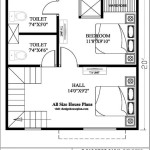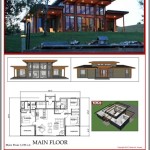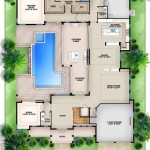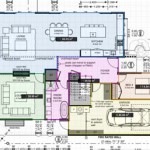Large Dog House Plans With Material List
Providing adequate shelter for a large dog requires careful planning and execution. A well-constructed dog house offers protection from the elements, a safe haven, and a comfortable space for rest. Choosing the right large dog house plans and assembling a comprehensive material list are crucial first steps in this worthwhile project. This article will delve into the key considerations for constructing a large dog house, highlighting essential features and detailing a sample material list to guide the building process.
The dimensions of the dog house should be proportional to the size of the dog. A structure too small restricts movement and can feel confining, while a structure too large loses heat efficiency during colder months. As a general rule, the interior height should allow the dog to stand comfortably without hitting its head. The length and width should accommodate the dog lying down fully stretched out and turning around with ease. It is advisable to add a few extra inches to these measurements to ensure ample space. Breeds such as Great Danes, Saint Bernards, and Irish Wolfhounds will require significantly larger dimensions compared to breeds like Labrador Retrievers or German Shepherds. Thoroughly research the specific dimensions recommended for the chosen breed.
Before commencing the build, it is crucial to consider the location of the dog house. The chosen location should ideally be sheltered from prevailing winds and direct sunlight, especially during peak summer hours. Placement near a building or fence can provide additional protection, but adequate ventilation must still be ensured to prevent the build-up of moisture and odors. The ground should be level and well-drained to prevent waterlogging. Consider the proximity to the main house for easy access and monitoring of the dog's well-being.
Key Point 1: Accurate Measurement and Design Considerations
Precise measurements are paramount for constructing a functional and comfortable dog house. The following considerations are crucial during the design phase:
Interior Dimensions: Accurately measure the dog's height, length, and width while standing and lying down. Account for growth if the dog is still a puppy. Add several inches to each measurement to provide ample space for movement.
Doorway Size: The doorway should be wide enough for the dog to enter and exit comfortably without bumping its head or sides. A doorway height slightly shorter than the dog's shoulder height can help retain heat during colder months. Reinforce the doorway edges to prevent damage from chewing or scratching.
Roof Design: A sloped roof is preferable to a flat roof for water runoff. The slope should be sufficient to allow rainwater and snow to easily slide off. Overhanging eaves can provide additional protection from rain and sun. Consider the weight of accumulated snow in regions that experience heavy snowfall and ensure the roof structure is strong enough to bear the load.
Ventilation: Adequate ventilation is essential to prevent the build-up of moisture and odors. Vents can be placed near the roofline or under the eaves. Cover the vents with mesh to prevent insects and rodents from entering.
Insulation: In colder climates, insulation is vital for maintaining a comfortable temperature inside the dog house. Insulating the walls, roof, and floor will help retain heat and protect the dog from the elements. Consider using rigid foam insulation or fiberglass batting. Ensure the insulation is properly sealed to prevent moisture damage and to deter chewing.
Key Point 2: Sample Material List and Construction Techniques
A comprehensive material list ensures that all necessary components are readily available before construction begins. The following is a sample material list for a large dog house. Quantities will vary depending on the specific dimensions of the chosen plan.
Framing Materials:
- Pressure-treated lumber (2x4s): For the base frame and wall studs.
- Lumber (2x4s): For the roof rafters.
Sheathing Materials:
- Exterior-grade plywood (½ inch or ¾ inch): For the walls, roof, and floor. Choose a plywood with a waterproof adhesive.
Roofing Materials:
- Asphalt shingles or roofing felt: For weatherproofing the roof.
- Roofing nails: For securing the shingles or felt.
Insulation Materials (Optional):
- Rigid foam insulation or fiberglass batting: For insulating the walls, roof, and floor.
- Construction adhesive: For securing the insulation.
Fasteners:
- Exterior-grade screws: For assembling the frame and attaching the sheathing.
- Nails: For general construction purposes.
Doorway Materials:
- Lumber (1x4s or 2x4s): For framing the doorway.
- Metal flashing: To protect the doorway from water damage.
Miscellaneous:
- Wood sealant or paint: For protecting the wood from the elements. Choose a non-toxic sealant or paint that is safe for animals.
- Caulk: For sealing gaps and joints.
- Mesh screen: For covering ventilation openings.
- Gravel or wood chips: For providing drainage under the dog house.
Tools Required:
- Measuring tape
- Saw (circular saw, hand saw, or miter saw)
- Drill
- Screwdriver
- Hammer
- Level
- Safety glasses
- Work gloves
Construction Techniques:
Framing: Construct the base frame using pressure-treated lumber. Ensure the frame is level and square. Build the wall frames and attach them to the base frame. Use screws for a strong and durable connection.
Sheathing: Attach the plywood sheathing to the wall frames, roof rafters, and floor frame. Use screws to secure the sheathing. Ensure the sheathing is properly aligned and flush with the frame.
Roofing: Install roofing felt or asphalt shingles according to the manufacturer's instructions. Overlap the shingles to prevent water from penetrating the roof. Secure the shingles with roofing nails.
Insulation: If insulating the dog house, install the insulation between the wall studs and roof rafters. Secure the insulation with construction adhesive or staples. Cover the insulation with a vapor barrier to prevent moisture damage.
Doorway: Frame the doorway using lumber. Ensure the doorway is the correct size for the dog. Install metal flashing around the doorway to protect it from water damage.
Finishing: Seal or paint the exterior of the dog house with a non-toxic sealant or paint. Caulk any gaps or joints to prevent water from entering. Install mesh screen over ventilation openings to prevent insects and rodents from entering.
Key Point 3: Enhancements for Comfort and Durability
Several enhancements can be incorporated into the dog house design to improve comfort and extend its lifespan:
Raised Floor: Elevating the floor of the dog house a few inches above the ground provides better insulation and prevents moisture from seeping in. This can be achieved by constructing a frame and attaching legs to it. Ensure the legs are sturdy and can support the weight of the dog house and the dog.
Removable Roof: A removable roof simplifies cleaning and maintenance. The roof can be hinged on one side or designed to slide off. Secure the roof with latches or bolts to prevent it from being blown off by the wind.
Porch: A small porch in front of the doorway provides a sheltered space for the dog to relax and observe its surroundings. Construct the porch using pressure-treated lumber and attach it securely to the dog house.
Bedding: Provide comfortable bedding inside the dog house. Options include blankets, dog beds, or straw. Choose bedding that is easy to clean and replace. Regularly clean the bedding to prevent the build-up of odors and bacteria.
Windbreak: A windbreak can be added to the doorway to reduce drafts and keep the dog house warmer during colder months. The windbreak can be a simple flap of heavy-duty fabric or a more elaborate structure made of wood or plastic.
Chew-Proofing: Dogs, particularly puppies, tend to chew on things. Reinforce vulnerable areas of the dog house, such as the doorway edges and corners, with metal or durable plastic to prevent damage. Choose non-toxic materials that are safe for the dog to chew on.
Regular Maintenance: Regularly inspect the dog house for signs of damage, such as cracks, leaks, or rot. Repair any damage promptly to prevent it from worsening. Clean the dog house regularly to remove dirt, debris, and odors. Reapply sealant or paint as needed to protect the wood from the elements.
Careful planning, precise construction, and the use of durable materials will result in a large dog house that provides a safe, comfortable, and long-lasting shelter for the canine companion. Adhering to these guidelines ensures a successful project and a happy, well-sheltered dog.

14 Diy Dog Houses How To Build A House Plans Blueprints

Large Dog House Plans Free Construct101

14 Diy Dog Houses How To Build A House Plans Blueprints

Dog House Plans Large Diy
:strip_icc()/Beautiful-Pallet-Dog-House-with-Veranda-1-5a202f90494ec90037893a82.jpg?strip=all)
14 Free Diy Dog House Plans Anyone Can Build

14 Diy Dog Houses How To Build A House Plans Blueprints

Large Dog House Plans Myoutdoorplans

Large Dog House Plans Myoutdoorplans

Large Dog House Plans Free Construct101

Digital Plans For Large Double Dog Kennel Tv Stand Diy
Related Posts








